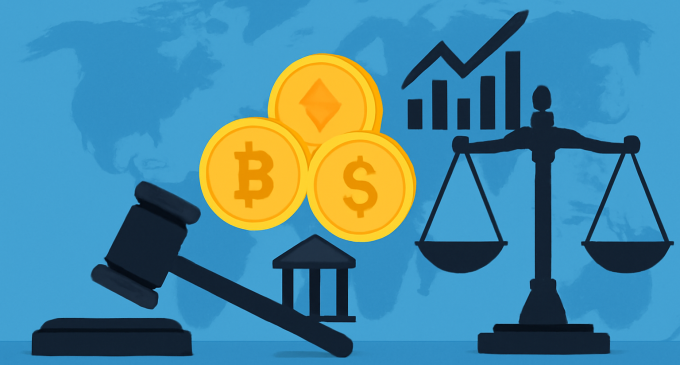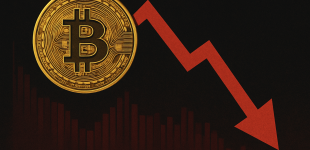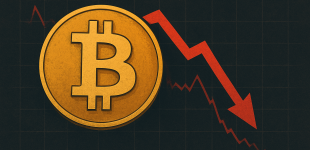
Introduction
The cryptocurrency market, once regarded as the wild west of finance, is steadily moving toward a period of increased regulation and scrutiny. With digital assets becoming increasingly mainstream, regulatory bodies across the globe are beginning to understand that cryptocurrency is not just a passing trend. As adoption rises, the cryptocurrency market faces rising pressure to comply with evolving regulatory frameworks.
The regulatory landscape in the United States, Europe, and other key regions is shifting, presenting both challenges and opportunities for the crypto ecosystem. Central to these developments are two key factors: the classification of crypto assets and the security concerns surrounding decentralized finance (DeFi) platforms and Initial Coin Offerings (ICOs). As the market matures, these regulations aim to ensure consumer protection, prevent fraud, and foster financial stability, but they also pose significant challenges for industry participants.
Rising Scrutiny From U.S. Regulators
The United States, as a global leader in financial markets, has been at the forefront of regulatory discussions surrounding cryptocurrency. The Securities and Exchange Commission (SEC) has played a pivotal role in shaping the regulatory framework for crypto, especially in terms of defining whether various digital assets should be classified as securities or commodities.
The SEC’s Approach to Cryptocurrencies
Historically, the SEC has leaned toward classifying many cryptocurrencies, especially tokens from Initial Coin Offerings (ICOs), as securities. This classification stems from the Howey Test, which determines whether an asset constitutes an investment contract. If an asset is deemed a security, it must comply with stringent regulations under U.S. securities laws.
For crypto projects, this classification is significant because it means they would be subject to the SEC’s oversight, including requirements for transparency, reporting, and compliance with anti-fraud provisions. Many crypto startups, especially during the ICO boom of 2017-2018, have faced enforcement actions by the SEC due to the failure to register their tokens as securities.
However, the SEC’s inconsistent application of this classification has raised concerns in the industry. Some projects, like Bitcoin (BTC) and Ethereum (ETH), have been deemed commodities by the U.S. Commodity Futures Trading Commission (CFTC), which has led to confusion over which regulatory body has jurisdiction. This uncertainty has created an environment where some crypto projects are hesitant to innovate or expand in the U.S. for fear of facing unanticipated regulatory hurdles.
The SEC and Bitcoin ETF Approval
The SEC’s regulatory approach has been most notable in its handling of Bitcoin exchange-traded funds (ETFs). For years, institutional investors have sought approval for Bitcoin ETFs, which would allow them to gain exposure to Bitcoin without directly holding the asset. Despite the potential for increased institutional participation in the market, the SEC has been cautious in approving Bitcoin ETFs due to concerns about market manipulation and lack of investor protection.
In recent months, however, there has been growing optimism that a Bitcoin ETF could finally receive approval. The SEC has indicated that it is reviewing multiple Bitcoin ETF applications, including proposals from major financial institutions. The approval of a Bitcoin ETF could be a game-changer for the market, as it would open the floodgates for mainstream institutional investment, potentially driving up the price of Bitcoin and bringing additional legitimacy to the crypto market.
Clearer Guidelines for Cryptocurrencies
Despite these hurdles, there are signs that the SEC is working towards clearer guidelines for the crypto industry. In response to growing demand for regulatory clarity, the SEC has indicated that it will continue to refine its stance on cryptocurrency classification. One key area of focus is the distinction between security tokens and utility tokens. Security tokens, which represent ownership of an asset, would fall under traditional securities laws, while utility tokens, which provide access to a platform or service, may be exempt.
Regulatory clarity is crucial for fostering innovation and ensuring that crypto businesses can operate within a clear legal framework. The development of these guidelines could potentially unlock new avenues for innovation and provide a more stable environment for cryptocurrency investments.
Europe’s MiCA Regulation: A Comprehensive Approach
While the U.S. has been taking a more cautious approach, Europe has made significant strides in developing a comprehensive regulatory framework for cryptocurrency. The Markets in Crypto Assets (MiCA) regulation is set to become one of the most influential legislative frameworks governing digital assets in Europe. The MiCA regulation aims to create a single regulatory framework for cryptocurrencies across the European Union, providing legal certainty to both investors and businesses in the crypto space.
The Role of MiCA in Shaping the European Crypto Market
MiCA seeks to address several critical issues facing the crypto industry, including market manipulation, investor protection, and financial stability. One of its core provisions is the classification of different types of crypto assets. For instance, MiCA defines “crypto-assets” broadly to include not only tokens but also stablecoins and other forms of digital assets. It creates a clear distinction between “e-money tokens” (such as stablecoins pegged to fiat currencies) and “asset-referenced tokens” (such as Bitcoin and Ethereum).
MiCA also introduces strict requirements for crypto asset service providers (CASPs), which include exchanges, wallet providers, and custodians. These providers will be required to register with national regulators and adhere to stringent transparency, anti-money laundering (AML), and consumer protection standards.
For businesses operating in the crypto space, MiCA represents a significant step forward in terms of legal certainty. It will create a level playing field across the EU, allowing crypto firms to expand and innovate within a unified regulatory environment. MiCA is also expected to improve consumer confidence in the market by providing clear rules for disclosures, reporting, and governance.
Stablecoins and Financial Stability
A key focus of MiCA is the regulation of stablecoins, particularly the growing influence of major stablecoins like Tether (USDT) and USD Coin (USDC). Stablecoins are a critical component of the crypto ecosystem, as they provide a bridge between traditional finance and the crypto world. However, their growing market share has raised concerns about financial stability, particularly in the event of a “run” on a stablecoin if users lose confidence in its backing.
MiCA introduces specific requirements for stablecoin issuers, such as ensuring that stablecoins are backed by adequate reserves and that they comply with anti-money laundering and counter-terrorism financing regulations. These measures aim to mitigate the risks posed by stablecoins and protect the broader financial system from potential disruptions.
Global Trends And The Shift Toward Regulatory Clarity
The push for clearer cryptocurrency regulations is not limited to the U.S. and Europe. Countries around the world are developing their own frameworks to address the unique challenges posed by digital assets. For example, countries like Singapore, Switzerland, and Japan have become crypto hubs due to their progressive regulatory stances.
In contrast, nations like China and India have taken a more restrictive approach, with China having outright banned cryptocurrency trading and mining in recent years. However, China is also exploring the development of a Central Bank Digital Currency (CBDC), which could represent a shift in how digital assets are integrated into the financial system.
The trend toward regulation is seen as a necessary step to bring legitimacy to the crypto industry. Without clear rules, the market is vulnerable to fraud, scams, and manipulation, all of which have been prevalent in the past. As a result, the move toward regulatory clarity is likely to attract more institutional investors, enhance market stability, and increase consumer confidence.
The Future Of Cryptocurrency In A Regulated World
While regulatory pressure will undoubtedly pose challenges for crypto businesses, it also presents significant opportunities. Clear rules and frameworks will allow businesses to operate with greater certainty and will help establish cryptocurrency as a mainstream asset class.
Regulation also provides an opportunity for the crypto market to mature, as it will force industry participants to comply with best practices in terms of security, transparency, and customer protection. For investors, a well-regulated crypto market is likely to offer more confidence, especially for institutional investors who have long been hesitant to enter the market due to its perceived risks.
In the coming years, we can expect to see more harmonized global regulations that will allow cryptocurrencies to function as a legitimate asset class within the broader financial system. These developments will lay the foundation for a safer, more transparent crypto market, ultimately benefiting both businesses and consumers.
Conclusion
The regulatory landscape for cryptocurrencies is evolving rapidly, with significant changes expected in the coming years. While regulatory scrutiny poses challenges for crypto businesses and investors, it is a necessary step toward achieving mainstream adoption and long-term legitimacy. As global regulators, including the SEC in the U.S. and the European Union with MiCA, push for clearer guidelines, the crypto industry will need to adapt and comply with new rules.
However, these regulations will also create a more stable environment for innovation, reduce the risks of fraud, and provide clearer pathways for institutional investors to enter the market. As the regulatory framework continues to develop, the crypto market is likely to see greater integration with the global financial system, paving the way for a new era of digital finance.







There are no comments at the moment, do you want to add one?
Write a comment